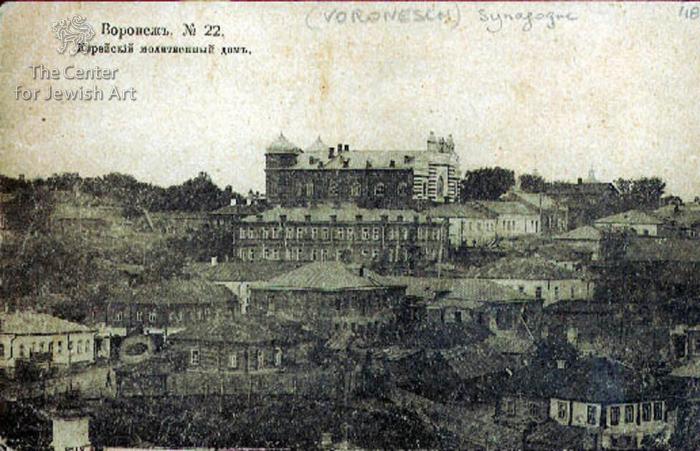
Synagogue in Voronezh, postcard from 1917
Center for Jewish Art, The Hebrew University of Jerusalem, Copy YVA 15327004


In 1939 the city's 8,358 Jews comprised 2.5 percent of the total population.
On July 7, 1942, the part of Voronezh on the right bank of the Voronezh River was occupied by Germans and Hungarians, who had brought with them to the Eastern Front "labor service" Jews, many of whom were either killed or captured, along with Hungarian soldiers, by the Red Army. The Jewish residents of occupied areas were transported to Khokhol village. In the process some Jews were shot on the streets of Voronezh, while most of these Jews were shot in the vicinity of Khokhol village in September 1942.
The occupied part of Voronezh was liberated by the Red Army on January 25, 1943.